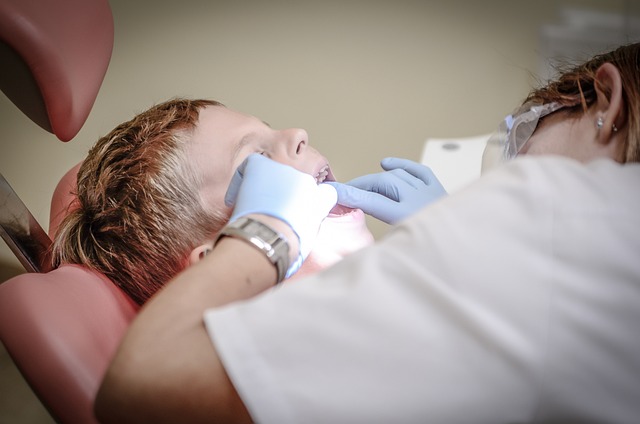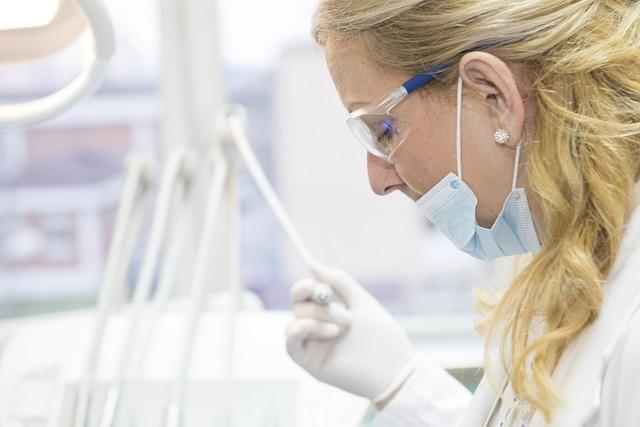Mouthwash After Tooth Extraction: A Friendly Guide
Welcome to our friendly guide on using mouthwash after a tooth extraction! Whether you’ve recently undergone a dental surgery or you’re just curious about the do’s and don’ts of mouthwash post-extraction, you’ve come to the right place. In this informative article, we’ll provide you with all the essential information you need to confidently maintain oral hygiene, while ensuring a smooth and comfortable recovery process. So sit back, relax, and let us be your trusted companion on this journey to a healthier mouth.
1. Understanding the Importance of Using Mouthwash after Tooth Extraction
Using mouthwash after tooth extraction is an important step in promoting oral health and ensuring proper healing. It can play a crucial role in preventing infections, reducing discomfort, and maintaining good oral hygiene. Here’s why using mouthwash is essential:
1. Kills bacteria: Mouthwashes containing antibacterial ingredients help eliminate harmful bacteria that can lead to infections or other complications after tooth extraction.
2. Reduces swelling and pain: Rinsing with a medicated mouthwash can help alleviate swelling and discomfort, providing relief during the healing process.
3. Cleans and disinfects: Mouthwashes reach areas that might be difficult to clean with brushing or flossing alone, helping to effectively clean the extraction site and prevent build-up of plaque or debris.
4. Freshens breath: Mouthwash leaves a refreshing taste and helps mask any temporary unpleasant odor that may occur after tooth extraction.
5. Promotes healing: The antiseptic properties of certain mouthwashes assist in healing the wound by creating an optimal environment for tissue regeneration.
It’s important to note that not all mouthwashes are suitable for use directly after tooth extraction. Consult your dentist for recommendations on the right type and frequency of mouthwash use for your specific case. Proper usage, following the instructions provided by your dentist or on the product label, will ensure the best results and aid in a smooth recovery.

2. How Mouthwash Promotes Healing and Prevents Infections Following Tooth Extraction
Mouthwash can be a powerful tool in promoting healing and preventing infections following a tooth extraction. Here’s how:
- Reduces bacteria: Mouthwash containing antimicrobial properties helps reduce the number of bacteria in your mouth, which can prevent infections at the extraction site.
- Cleans the area: Rinsing with mouthwash helps to clean the area surrounding the extraction site, removing any debris or food particles that may be stuck and potentially lead to infection.
- Minimizes inflammation: Certain mouthwashes with anti-inflammatory ingredients can help minimize swelling and inflammation, aiding in the healing process.
- Promotes blood clotting: Certain compounds in mouthwash can promote the formation of blood clots at the extraction site, which is crucial for proper healing and preventing dry socket.
It is important to choose a mouthwash specifically recommended for post-tooth extraction use, as it will have the necessary healing and antiseptic properties. Remember to follow the instructions provided by your dentist or oral surgeon for using mouthwash after a tooth extraction and maintain a consistent routine to ensure optimal healing and preventative effects.

3. Choosing the Right Mouthwash for Aftercare: A Breakdown of Different Options
When it comes to maintaining good oral hygiene, using mouthwash is an essential part of your daily routine. However, with so many options available on the market, it can be overwhelming to choose the right one for your specific needs. To help you make an informed decision, here is a breakdown of different types of mouthwashes:
1. Fluoride Mouthwash: This type of mouthwash contains fluoride, which helps strengthen tooth enamel and prevent tooth decay. It is particularly beneficial for individuals who are prone to cavities or have a high risk of developing dental problems.
2. Antiseptic Mouthwash: Antiseptic mouthwashes contain ingredients such as chlorhexidine or essential oils that help kill bacteria in the mouth. They are highly effective in reducing plaque, gingivitis, and bad breath. It is important to note that antiseptic mouthwash should be used as directed by your dentist, as prolonged use may lead to staining of teeth.

4. Step-by-Step Guide: How to Safely Incorporate Mouthwash into your Post-Extraction Routine
If you’ve recently had a tooth extraction, incorporating mouthwash into your post-extraction routine can help promote healing, prevent infection, and maintain overall oral hygiene. However, it’s important to follow certain steps and precautions to ensure the safety and effectiveness of using mouthwash after an extraction. Here’s a step-by-step guide on how to safely incorporate mouthwash into your post-extraction routine:
First 24 Hours
In the first 24 hours following your tooth extraction, it’s crucial to avoid using mouthwash altogether. This allows for a blood clot to form and for the extraction site to begin healing properly. Instead, focus on gently rinsing your mouth with warm saltwater after meals to keep the area clean and free of bacteria. Be careful not to swish vigorously, as this may dislodge the blood clot and impede healing.
48 Hours and Beyond
After the initial 24-hour period, you can start incorporating mouthwash into your routine. Here’s what you need to do:
- Choose an alcohol-free, antimicrobial mouthwash specifically designed for sensitive mouths or post-extraction use.
- Add the recommended amount of mouthwash to a small cup or dispenser.
- Rinse your mouth with the mouthwash for the specified time on the label.
- Do not gargle or vigorously swish the mouthwash. Instead, gently move it around in your mouth to reach all areas.
- Spit out the mouthwash carefully into the sink, making sure to avoid strong spitting or rinsing with water afterwards.
- Repeat this process as recommended by your dentist or oral surgeon. Usually, using mouthwash twice a day, after brushing your teeth, is sufficient.
Remember, it’s crucial to follow your dentist’s instructions and consult them if you experience any unusual pain, bleeding, or discomfort after incorporating mouthwash into your post-extraction routine. By incorporating mouthwash safely and effectively, you can ensure a healthier recovery and maintain optimal oral hygiene.

5. Frequently Asked Questions about Using Mouthwash after Tooth Extraction
If you have recently undergone a tooth extraction, you may be wondering about the use of mouthwash during your recovery process. Here are some frequently asked questions and their answers to help guide you:
Is it safe to use mouthwash after a tooth extraction?
- Yes, it is generally safe to use mouthwash after a tooth extraction, but it’s important to follow your dentist’s instructions.
- Using a mild antiseptic mouthwash can help reduce the risk of infection and promote healing.
- Avoid using mouthwash immediately after the extraction as it may dislodge the blood clot and delay the healing process.
When can I start using mouthwash after a tooth extraction?
- Typically, you can start using mouthwash 24 hours after the extraction, or as advised by your dentist.
- It’s important to gently rinse your mouth with the mouthwash for about 30 seconds, making sure not to swish aggressively to avoid dislodging the blood clot.
- Opt for an alcohol-free mouthwash to prevent any stinging or irritation.
6. The Do’s and Don’ts of Using Mouthwash After Your Tooth Extraction
Mouthwash can be a helpful addition to your oral care routine after a tooth extraction. However, there are some important do’s and don’ts to keep in mind to ensure a smooth recovery and proper healing. Let’s take a look at what you should and shouldn’t do when using mouthwash after your tooth extraction:
Do:
- Wait at least 24 hours before using mouthwash to avoid dislodging the blood clot.
- Choose an alcohol-free mouthwash to prevent irritation and dryness.
- Gently swish the mouthwash for 30 seconds, without rinsing or spitting forcefully.
- Follow your dentist’s instructions on when and how often to use mouthwash.
Don’t:
- Use mouthwash immediately after your tooth extraction, as it may interfere with the formation of the blood clot necessary for healing.
- Use mouthwash that contains alcohol, as it can cause stinging and irritation.
- Rinse, gargle, or spit forcefully, as this can disrupt the blood clot and impede the healing process.
- Exceed the recommended usage of mouthwash, as it may lead to an imbalance in oral bacteria.
By following these do’s and don’ts, you can effectively incorporate mouthwash into your aftercare routine, promoting optimal healing and a healthier mouth. If you have any concerns or questions, don’t hesitate to reach out to your dentist for guidance.
7. Exploring the Benefits of Antibacterial Mouthwash for Tooth Extraction Aftercare
After your tooth extraction, taking care of your mouth is essential to promote healing and prevent complications. One helpful tool in your aftercare routine is antibacterial mouthwash. This type of mouthwash contains ingredients that actively work to kill bacteria in your mouth, reducing the risk of infection and ensuring a smoother recovery process. Let’s dive deeper into the benefits of incorporating antibacterial mouthwash into your tooth extraction aftercare routine.
1. Reduces the risk of infection: Antibacterial mouthwash helps eliminate harmful bacteria in your mouth, reducing the chances of developing an infection at the extraction site. This is particularly important since after a tooth extraction, an open wound is left behind, making it susceptible to bacteria entering and causing an infection. By using an antibacterial mouthwash, you create an environment that actively fights against bacteria, promoting a clean and bacteria-free healing process.
2. Promotes healing: Antibacterial mouthwash works to keep the extraction site clean, which is crucial for the healing process. It aids in removing debris and preventing the buildup of plaque, both of which can hinder the healing process. By maintaining a clean and sterile environment, you enhance the chances of a more rapid and successful recovery after your tooth extraction.
8. Discovering Natural Alternatives to Traditional Mouthwash for a Gentle Approach to Healing
When it comes to maintaining oral hygiene, mouthwash plays an important role. However, many traditional mouthwashes contain harsh chemicals that can be too strong for some individuals. If you are looking for a gentler approach to healing, you’ll be pleased to discover that there are natural alternatives available. These alternatives not only help freshen your breath but also contribute to overall oral health in a more wholesome way.
One natural alternative to traditional mouthwash is using a saltwater rinse. Simply mix a teaspoon of salt with warm water and swish it around your mouth for about 30 seconds. This simple solution can help kill bacteria and promote healing of minor mouth irritations. Another option is incorporating essential oils into your oral care routine. Tea tree oil, peppermint oil, and clove oil are known for their antibacterial properties and can freshen your breath naturally. To use essential oils, dilute a few drops in water and use it as a mouthwash. Additionally, green tea can be brewed and used as a mouthwash. Its antioxidant properties can help reduce inflammation and fight bacteria.
- Try a saltwater rinse – combine 1 teaspoon of salt with warm water for a gentle and healing mouthwash.
- Experiment with essential oils – dilute a few drops of antibacterial essential oils like tea tree, peppermint, or clove in water.
- Brew some green tea – harness its antioxidant properties to reduce inflammation and fight bacteria in your mouth.
By exploring these natural alternatives, you can prioritize gentleness in your oral care routine while still maintaining fresh breath and a healthy mouth. Remember, it’s always important to consult with your dentist before making any changes to your oral care regimen.
9. Tips and Tricks for a Comfortable Mouthwash Routine Following Your Tooth Extraction
After a tooth extraction, taking care of your mouth becomes essential to prevent infections and promote healing. Incorporating a comfortable mouthwash routine into your daily oral hygiene can make a world of difference. Here are some tips and tricks to ensure your mouthwash routine is effective and pleasant:
- Choose the right mouthwash: Opt for a gentle, non-alcoholic mouthwash that is specifically designed for post-tooth extraction care. Look for one that has antimicrobial properties to help kill bacteria and reduce the risk of infection. Avoid mouthwashes with strong flavors or harsh chemicals that may cause discomfort.
- Dilute your mouthwash: If you find that using regular-strength mouthwash is too strong or stings your mouth, try diluting it with water. Mix equal parts water and mouthwash to create a milder solution that still provides the benefits of the mouthwash without any discomfort.
- Swish gently: When using mouthwash, be careful not to swish too vigorously, especially in the area where the tooth extraction took place. Gently swish the mouthwash around your mouth for the recommended time (usually around 30 seconds to one minute) and then spit it out. Avoid gargling forcefully, as this can disrupt the blood clot and slow down the healing process.
Remember, a proper mouthwash routine can help maintain oral hygiene while promoting a comfortable healing process after a tooth extraction. Talk to your dentist or oral surgeon for personalized advice and to address any concerns you may have.
10. Maintaining Oral Health: Incorporating Mouthwash into Your Long-Term Dental Care Routine
When it comes to maintaining good oral health, brushing and flossing are the standard practices that everyone knows. However, incorporating mouthwash into your daily dental care routine can greatly enhance the health of your mouth. Mouthwash offers several benefits that go beyond just freshening your breath.
Here are some reasons why you should consider adding mouthwash to your dental care routine:
- Reduces plaque and gingivitis: Mouthwash contains antibacterial properties that can help kill the bacteria responsible for plaque and gingivitis, reducing the risk of gum disease.
- Fights bad breath: If you find that bad breath is a recurring issue for you, mouthwash can help eliminate odor-causing bacteria and freshen your breath.
- Prevents cavities: Some mouthwashes contain fluoride, a mineral that strengthens enamel and helps prevent tooth decay.
- Soothes mouth sores: Using a mouthwash with a gentle formula can provide relief and promote healing of mouth sores, such as canker sores or ulcers.
With so many different mouthwash options available, it’s important to choose one that suits your specific needs. Look for a mouthwash that is alcohol-free if you have sensitive gums or a history of dry mouth. Also, make sure to read the label and follow the instructions for optimal usage.
Frequently Asked Questions
Q: Why is using mouthwash important after a tooth extraction?
A: Using mouthwash after a tooth extraction is important for maintaining proper oral hygiene and preventing any potential infections.
Q: When should I start using mouthwash after a tooth extraction?
A: It is typically recommended to wait 24 hours after your tooth extraction before starting to use mouthwash. This gives enough time for the blood clot to form and stabilize in the extraction site.
Q: What type of mouthwash is the most suitable for post-extraction care?
A: It is best to use an alcohol-free mouthwash or one recommended by your dentist. Alcohol-free options are gentler on the healing extraction site and less likely to cause irritation.
Q: How should I use mouthwash after a tooth extraction?
A: After waiting 24 hours, gently rinse your mouth with the mouthwash, making sure to swish it around all areas, including the extraction site, for about 30 seconds. Avoid any vigorous rinsing or spitting forcefully, as it may dislodge the blood clot.
Q: How frequently should I use mouthwash after a tooth extraction?
A: You should use mouthwash after each meal and before bedtime for the first week following your tooth extraction. After the first week, you can reduce the frequency to 2-3 times a day, or as recommended by your dentist.
Q: Can I use warm saltwater as an alternative to mouthwash?
A: Yes, warm saltwater rinses can be used as an alternative to mouthwash. Dissolve half a teaspoon of salt in a cup of warm water and gently swish it around your mouth, similar to using mouthwash. However, it’s always best to consult your dentist for personalized advice.
Q: Are there any precautions to take while using mouthwash after a tooth extraction?
A: Yes, be careful not to spit forcefully or rinse aggressively, as it may dislodge the blood clot and delay the healing process. It’s also important to avoid smoking, using a straw, or consuming hot foods and drinks for at least 24 hours after the extraction.
Q: How long should I continue using mouthwash after a tooth extraction?
A: You should continue using mouthwash for at least one to two weeks after your tooth extraction, or as recommended by your dentist. This helps ensure proper oral hygiene and reduces the risk of infection.
Q: What should I do if I experience any unusual symptoms or concerns during the healing process?
A: If you experience any unusual symptoms such as severe pain, excessive bleeding, swelling, or prolonged discomfort, it is crucial to contact your dentist immediately. They can evaluate and provide appropriate guidance to address your concerns.
Conclusion
Thank you for taking the time to read our friendly guide on mouthwash after tooth extraction. We hope that this article has provided you with valuable information and answered any questions or concerns you may have had.
Remember, mouthwash can be a useful tool in maintaining oral hygiene after a tooth extraction, but it is crucial to follow your dentist’s recommendations and use the right type of mouthwash. Always opt for an alcohol-free product and wait until the appropriate time has passed before incorporating it into your routine.
By understanding the benefits and limitations of mouthwash after a tooth extraction, you can ensure a speedy and comfortable recovery. Don’t hesitate to reach out to your dentist if you have any doubts or if complications arise.
Lastly, we encourage you to take care of your overall oral health by following good oral hygiene practices. Brushing, flossing, and regular dental check-ups are vital for maintaining a healthy smile.
We hope that your tooth extraction recovery is smooth and painless, leading to a happier and healthier mouth. Thank you again for reading, and we wish you the best on your journey to optimal oral health!






